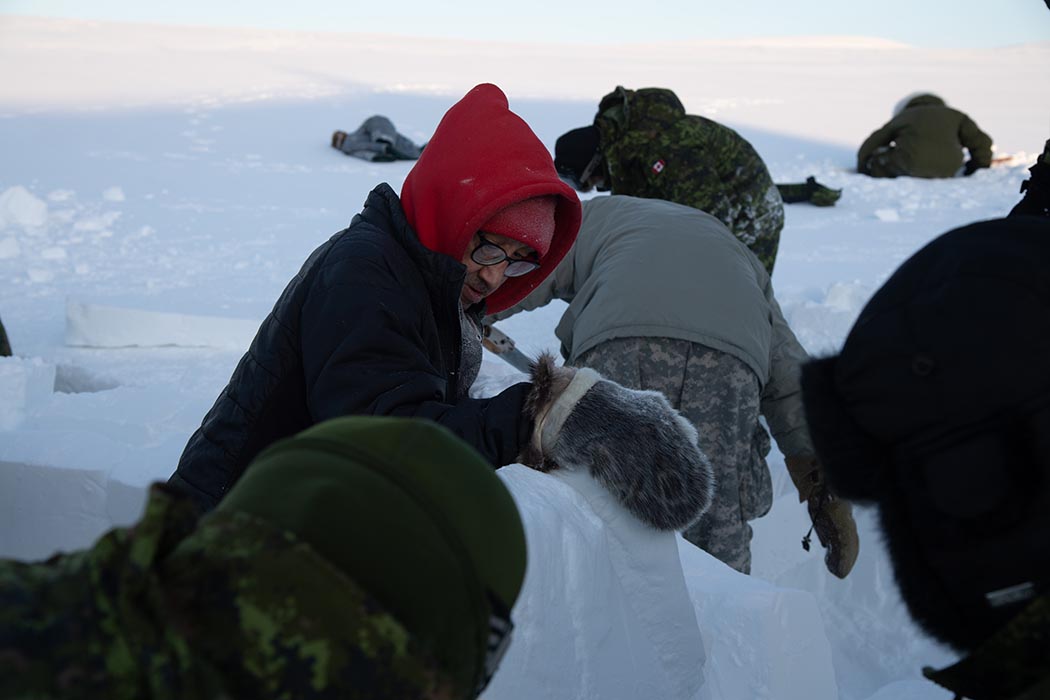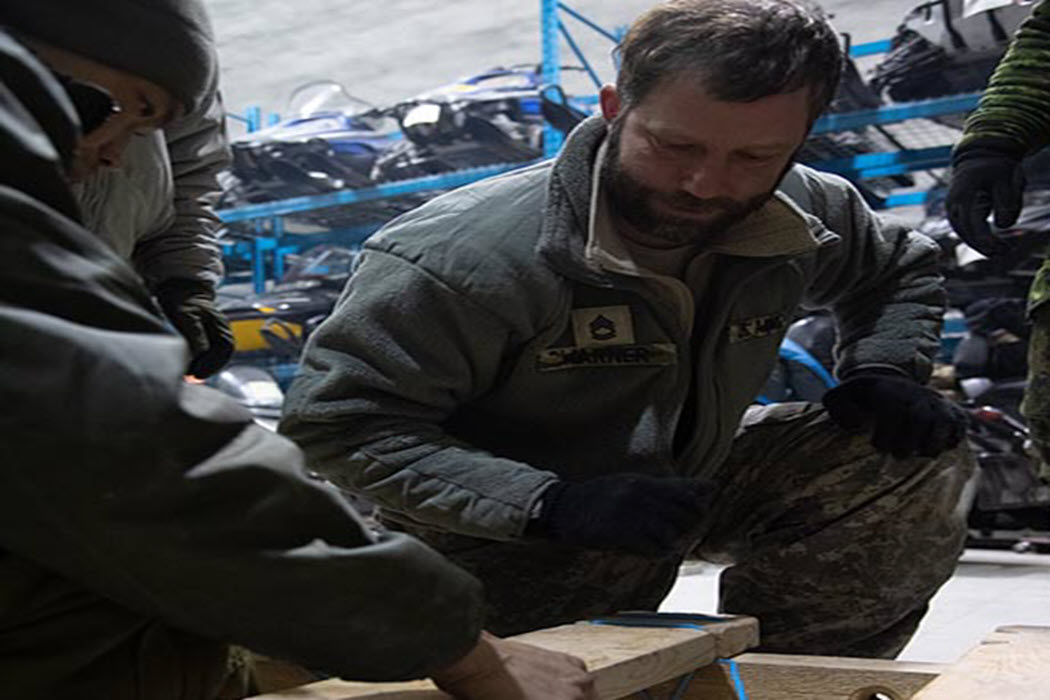Arctic Operations Course addresses emerging Arctic challenges
Article / March 21, 2022 / Project number: 22-0010
Note: to view additional photos, click the photo under Image Gallery.
By Captain Michael MacNeill, Public Affairs Officer, Combat Training Centre Headquarters
While Canadians have a reputation abroad for being able to live with cold winters, relatively few of us have experienced Arctic temperatures. Maybe those bragging rights should only belong to those living in Canada’s far North and participants on the Canadian Army (CA)’s Arctic Operations Course.
This year’s Course ran from February 7 to March 20, 2022, and included 29 candidates and 56 supporting staff and instructors. The candidates were Regular Force and Primary Reserve personnel, and allied soldiers from the U.S., U.K., Australia, and France. The Canadian personnel were from:
- Royal Canadian Regiment;
- Royal 22nd Regiment;
- Princess Patricia’s Canadian Light Infantry;
- Royal Regiment of Canadian Artillery;
- Royal Newfoundland Regiment;
- Queens Own Rifles;
- Hastings and Prince Edward Regiment
- 1 Field Ambulance;
- 2 Air Movements Squadron; and
- Various Canadian Ranger Patrols (Arctic Bay, Grise Ford, Hall Beach, Igloolik, and Pond Inlet).
The Arctic Operations Course is the advanced portion of the CA’s cold weather training. Graduates travel to the Canadian Armed Forces Arctic Training Centre (CAFATC) in Resolute Bay, Nunavut to learn how to assist in the planning, organization, coordination, conduct and supervision of deployments and training operations in the Arctic Region during its coldest months.
“As part of Canada’s commitment to Continental Defence, the Arctic Operations course ensures that the Canadian Armed Forces (CAF) are able to survive and excel in the challenging Arctic environment,” said Lieutenant-Colonel J.T.E. Kenney, Commanding Officer, Canadian Army Advanced Warfare Centre. “Supported by the Canadian Rangers, the Royal Canadian Air Force, and Joint Task Force North, the CA is constantly demonstrating its ability to lead and sustain joint operations, and sharing our long-standing expertise in Cold Weather Operations with our key allies.”
The course also imparts graduates with the knowledge and skills needed to assist and advise in planning Arctic operations, communications, conducting patrolling and ice reconnaissance, developing survival techniques such as self-rescue after falling through the ice, the construction of austere airstrips in the region, and establishing improvised camps sites or shelters.
Both highly challenging and rewarding, the course draws upon the invaluable support of Canadian Rangers and experts from the Canadian Army Advanced Warfare Centre.
Aside from the frigid temperatures, Canada’s Arctic holds many other challenges, such as shifting magnetic fields, vast distances, a lack of standing water or vegetation, and the ever-present and often exhausting challenge of moving around in the climate. The Canadian Rangers, and the local communities they represent, bring the knowledge of many generations not only to the challenge of surviving in the Arctic, but also prospering.
Although the Arctic Operations Course is managed by the Combat Training Centre’s Army Advanced Warfare Centre in Trenton, Ontario, the course mainly operates from the CAFATC in Resolute Bay.
The CAFATC is a state-of-the-art cold weather training facility that supports cold weather operations training to ensure CAF personnel are able to carry out their assigned tasks in the demanding Arctic environment. It also serves as command post for routine operations, emergency operations and disaster response in support of civilian authorities.
With the logistical support of the Canada’s Polar Continental Shelf Program, the CAFATC can accommodate training for Canadian Rangers, Arctic Company Response Groups, the Arctic Operations Course, search and rescue, CA sovereignty operations, and CAF joint exercises. The Centre is an invaluable asset to the CAF’s Joint Task Force North, which is responsible for 4 million square kilometres, 75 per cent of Canada’s coastline, and 36,563 islands.
Some might ask why the CA even needs to operate in the North, much less the Arctic. The not-so-simple reason is the region represents an important international crossroads where issues of climate change, international trade, and global security meet.
More specifically, climate change and advancements in technology are leading to an Arctic that is increasingly accessible to states and commercial actors seeking new possibilities, including international shipping routes and access to natural resources. These have also resulted in a growth in challenges such as search and rescue operations, natural and man-made disasters, and responding to actions by states with interests in the Arctic.
As a result, the Canadian Government has directed the CAF, through Strong Secure Engaged: Canada’s Defence Policy (SSE), to play four roles in the North:
- exercising surveillance and control over Arctic territory;
- demonstrating a visible and persistent regional presence;
- supporting Northern peoples and communities, and;
- contributing to whole-of-government cooperation and initiatives.
“The Arctic Operations course epitomizes the CA’s commitment to executing its mandate within SSE,” said LCol Kenney. “That includes increasing operational capability in the Arctic, conducting meaningful engagement with Arctic communities, integrating and operating with the Canadian Rangers, and reinforcing Canadian sovereignty in the North.”


